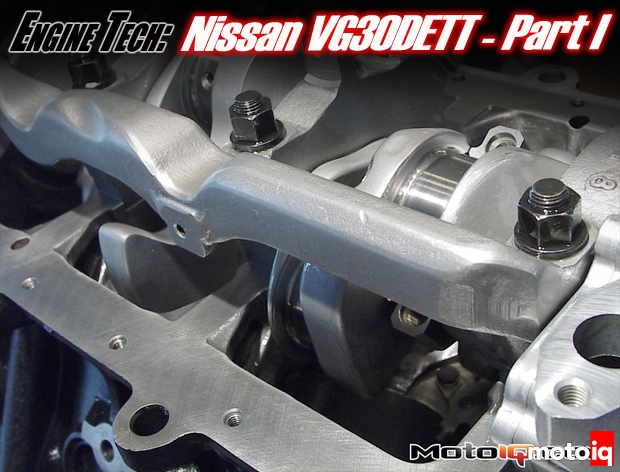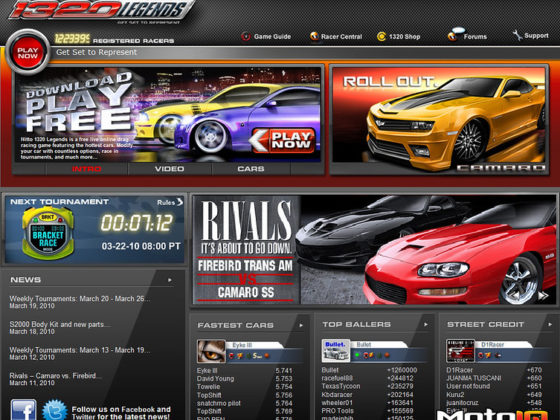Pistons
To withstand the stress of 20+ psi of turbo boost, we selected JWT’s forged pistons. Forged pistons are stronger compared to the stock cast pistons due to the same grain refinement and flow characteristics described with the forged connecting rods. JWT pistons are forged from high silicon aluminum alloy. Although high silicon aluminum is not quite as tough and ductile as lower silicon alloys, it is more dimensionally stable over a wider range of temperatures. Because of this, you can run much tighter cylinder to wall clearances with high silicon pistons. This creates a quieter, longer lasting engine free of piston slap. Ring life and seal is also improved with tighter clearances. Road racing engines and high performance street engines are often assembled with high silicon pistons because long service life is important. Low silicon pistons are best suited to short duration, extreme duty use events like drag racing, where life and noise are not important and can be sacrificed for toughness. Typically a high silicon piston can run clearances as tight as 0.0025” where a low silicon piston runs from 0.0040”-0.0060”. Even though a high silicon piston is slightly less ductile and tough than its low silicon brother it is still considerably stronger than any OEM type cast piston.
 |
| Forged JWT piston is 89mm and 8.5:1 compression. We treated the dome with Swain gold coat and the skirt with Poly Moly. |
The inherent strength of forged pistons will help them withstand the rigors of high boost without nearly as much worry about pinching ring lands or fracturing under the pounding of detonation. This will help us gain reliability even with a high power output. The JWT pistons are also about 40 grams lighter than the stock pistons, reducing reciprocating weight and strain on the connecting rods and crankshaft.
JWT pistons are also ground with a tapered barrel shape to the skirts with a slightly offset piston pin to reduce piston slap and the accompanying noise that is typical of racing forged pistons. These machining tricks also cut down on cylinder wall, piston and ring wear. These pistons are nearly as quiet as OEM cast pistons in terms of knocking or slapping noise.
 |
| The undersides of our piston received Swain’s heat rejecting coating. We used a thickwall piston pin to prevent flex. |
JWT pistons make use of genuine Nissan or other Japanese OEM type ring packages. The OEM rings on a typical Japanese piston are low tension like a racing type ring for low friction but have several features such as chrome facings that wear much better than your typical moly faced or iron aftermarket ring that domestic engine builders favor.
The pistons feature a thick, straight wall tool steel piston pin for superior strength important when running boost pressure to prevent the pin from flexing and grabbing the small end rod bushing. The pins are also slightly shorter so there is no excess unnecessary metal tied up in the length of the piston pin. The pins are retained with reliable double sprirolock retainers. These spring steel retainers can withstand much more side load than the stock wire type retainers and are quite reliable, an important feature as you do not want your piston pin to drift loose into the cylinder wall at high rpm!
 |
| Our JWT piston in the bore during fitting. |
We also had Swain Technologies coat our pistons to give them the final bit of protection. We coated the domes with Swain’s extreme use multi layer gold coat. Gold coat is unique because the base layers are thermo barrier but the middle layers are heat conductive. This makes for a more even distribution of heat across the top of the dome reducing the chances of hot spots developing. Gold coat is recommended for forced induction and really high compression applications. The coating will protect our pistons and holding the heat in the chambers might just help power.
Swain also coated out skirts with their Poly Moly skirt coating. Poly moly is also a unique engineered coating using tungsten disulfide, a tough but lubricious substance that also conducts heat. Heat conduction is critical because pistons lose much of their heat through conduction through the skirts and many coating manufacturers don’t address this. Poly Moly reduces friction and improves both piston and bore life. It also helps forged pistons run a bit quieter.
Stay tuned!
Sources



16 comments
This is a general enquiry.
Please can you tell me whether, in the event of a cam belt failure,the engine is “safe”, ie, do the valves and pistons hit each other?
Kindest regards,
Douglas
No, they will hit.
Look up on the net for 300ZX interference engine and you will find that it is. This means your valves are toast when the timing belt snaps while running.
I want to bore vg30de to 89mm bore
It is important to sonic test the block first. Not all VG’s can be bored that big safely.
Hi which oil sprayers did you utilize? the stock turbo or NA?
Stock Turbo but with aftermarket pistons it doesnt matter.
can we get an update on this build, i have safetly been at 700 hp for a year but looking to go all out on a new build would like to see what you have done to other parts of the motor, specifically porting the heads, i have gone extensive on it but would like to see if theres anything im missing, just bought the callies billet crank, for this build, as the rpm potential is 9500. with the right components.
The structural integrity of the block is probably going to be lacking at 9500 rpm. On even moderately built VG’s we see the registers get fretted and beat out on ones that are raced below 700 hp. We think 700 or less is probably close to the max this engine can take in extended racing conditions.
Hi I am Kagisho Michael Motswalakgoro I am looking for crankshaft for Nissan Hardbody 3litter engine and want to know we’re can I find it and how much it will cost me
Nissan dealer
If one is looking to do a 400 to 500 build. Do you believe it is necessary for a torque plate to be used? My machine guy has worked on plenty of VG’s but says he never uses plates when boring / honing. I’m boring to 88mm.
It is very important for ring seal and life
Am rebuilding my 92 300zx about how much would it cost to build my engine like that it’s something am doing with my son wich I hope to leave for him ?
Something like 12-16k
Did you modify the cylinder head check valves in the block , ,and what ring end gap would you recommend on a 87.50 bore?